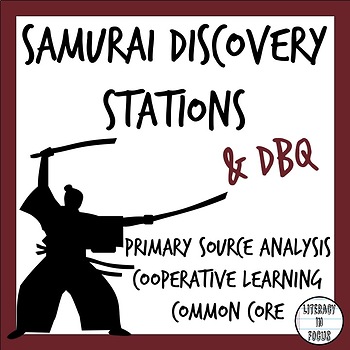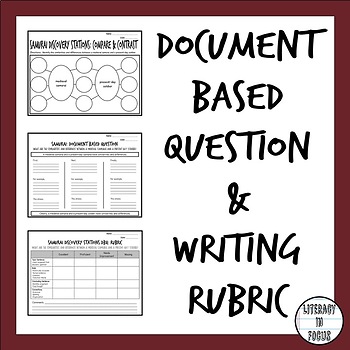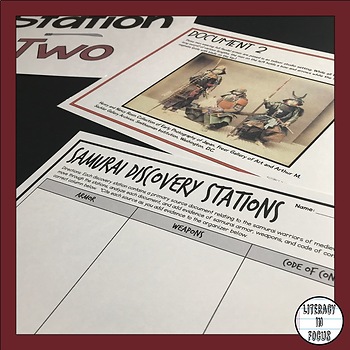Samurai of Medieval Japan | Primary Source Analysis | DBQ
- PDF
What educators are saying
Description
Use primary sources to teach your students about the samurai of Medieval Japan! Your students will learn about samurai armor, weapons, and code of conduct in this three-part Common Core aligned lesson. First, in an effort to ensure understanding of the primary sources, students define several tier-three vocabulary terms. Next, students move through the learning stations in order to collaboratively analyze each source. Finally, students complete two pre-writing activities before composing an organized paragraph answering the document based question.
WHAT TEACHERS ARE SAYING ABOUT THIS PRODUCT:
♥ I used this for an observation, and my evaluator was blown away. My students were so engaged during the activity, and they loved the comparison part. Thanks for saving me!
♥ This worked perfect for my 7th graders - I appreciate your time and effort in creating them. Thank you!
♥ This was a great resource for research on the Samurai.
♥ My freshmen love topics that are typically not in the ELA realm. They also love stations as much as I love them. This strategy gets them up and out of their seats. What's not to love!?!?!
INCLUDED WITH YOUR PURCHASE:
Vocabulary Grid: Six vocabulary words necessary for understanding the documents are included in the grid. The grid contains space for the definition, synonyms, a sentence, and a picture of each word. Ideally, students will have a chance to complete the vocabulary grid before analyzing the documents.
Primary Source Documents: Students will rotate through six different discovery stations focusing on the samurai of Medieval Japan. Each station will contain a primary source document relating to the samurai armor, weapons, or code of conduct. As the students analyze the documents, they will be looking for evidence to record on their data collection page. The primary source documents can be blown up to a larger size, projected on a laptop, or multiple copies of each poster can be made for each station.
Data Collection Page: Students will fill in evidence of samurai armor, weapons, and code of conduct in the correct column of the organizer as they move through the discovery stations and analyze each primary source.
Double Bubble Map: Students use their primary source findings to compare a medieval samurai and a present-day soldier.
Prewriting Organizer: After completing the entire rotation of discovery stations and bubble map, students use the prewriting page to organize their information in preparation for answering the document-based question.
DBQ Writing Rubric: The writing rubric provides students with clear expectations and guidelines for completing the DBQ assignment.
Answer Key: An answer key is provided for the vocabulary grid.
Station Posters: Six station posters are included (one for each primary source station).
~~~~~~~~~~~~~~~~~~~~~~~~~~~~~~~~~~~~~~~~~~~~~~~~~~~~~
ADDITIONAL RESOURCES YOU MIGHT BE INTERESTED IN:
Medieval Japan Map Lesson and Assessment
~~~~~~~~~~~~~~~~~~~~~~~~~~~~~~~~~~~~~~~~~~~~~~~~~~~~~
Want a FREE resource each month? Click HERE to follow Literacy in Focus, and you will be sent the monthly freebie!
Thank you!
©Literacy In Focus





